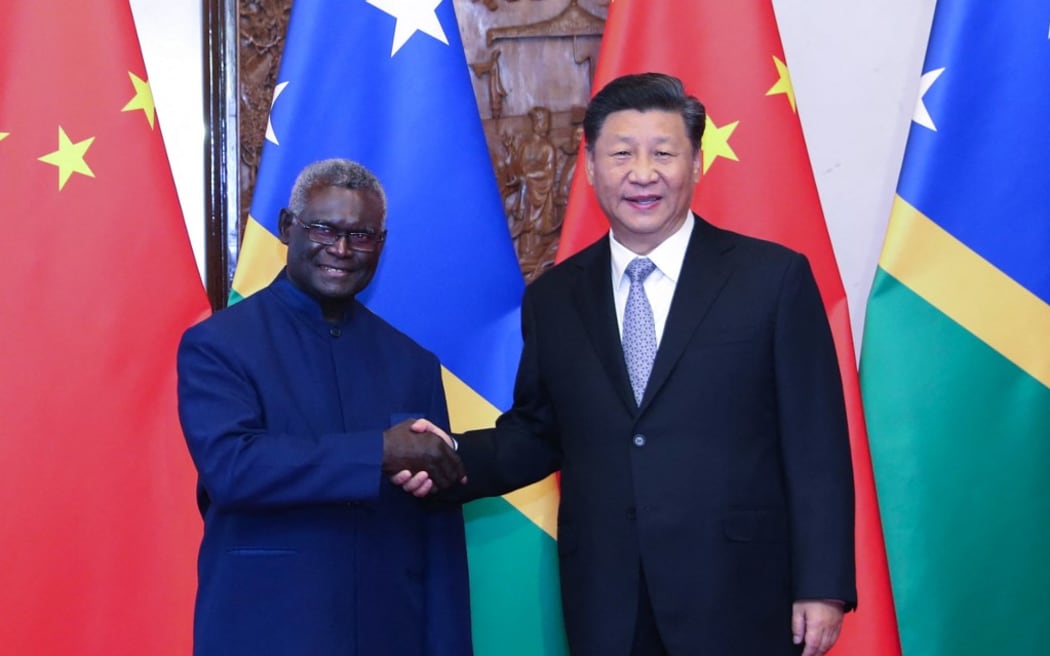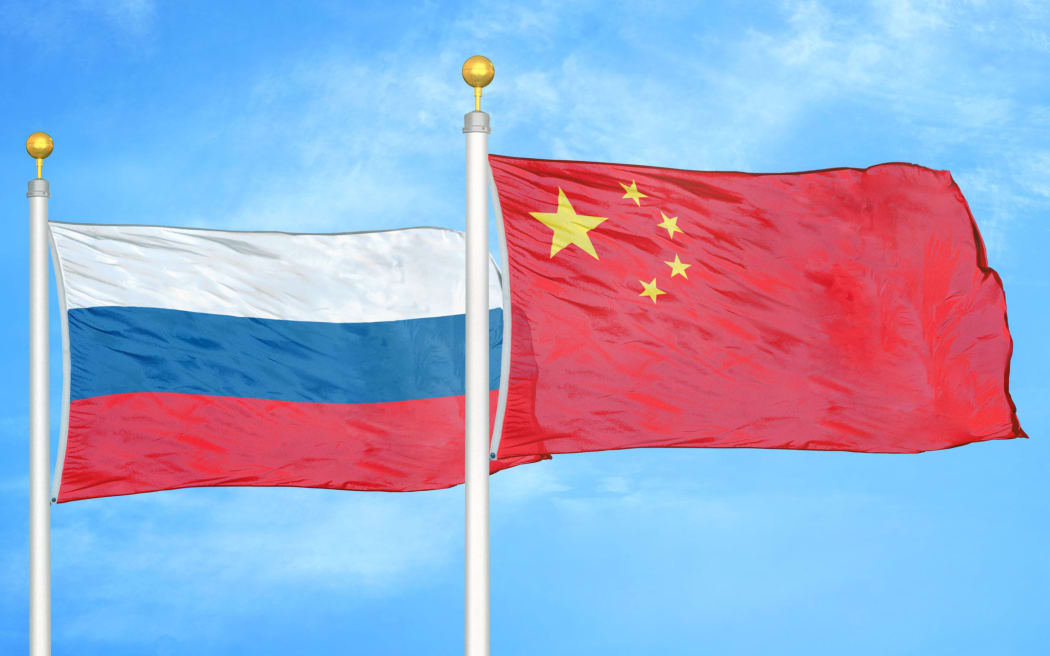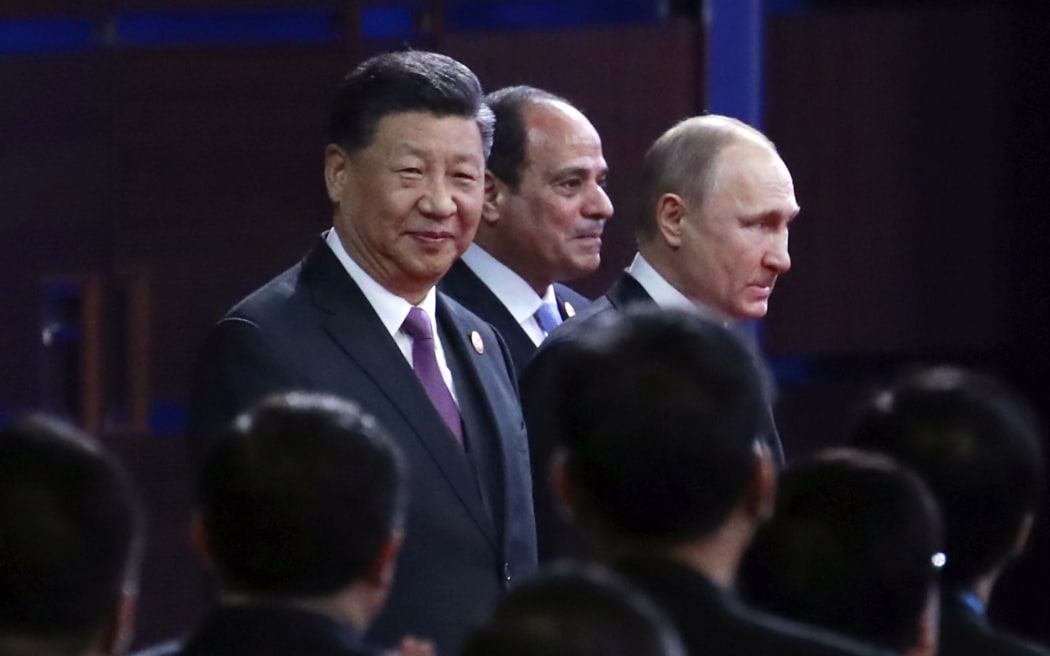News broke in May that China and the Solomon Islands had signed a security pact. Last week, the US and allies including New Zealand launched the partnership in the “Blue Pacific” in response. Great Power competition had reached our waters.
But what could a Chinese Pacific venture look like? A new book, Sinostan: China's Inadvertent Empire examines Chinese expansion along the old Silk Road, into the neighbouring Central Asia region offers. And offers at least some clues.

Chinese President Xi Jinping meets with Solomon Islands' Prime Minister Manasseh Sogavare at the Diaoyutai State Guesthouse in Beijing, capital of China, Oct. 9, 2019. Photo: AFP / XINHUA
Political philosophers Raffaelo Pantucci and Alexandros Petersen began visiting and researching China in the region of the “-stans” in 2012. Two years later, Petersen was killed in a bomb attack on a restaurant in Kabul, Afghanistan. But Pantucci, a researcher in terrorism and research fellow at various institutes has carried on, with the last visit during the Covid pandemic. The book spans a period of growing Chinese economic power, crackdowns in Xinjiang, China’s western gate to Central Asia and the launch of the so-called Belt and Road Initiative.
The authors through their regular visits manage to take a snapshot of a region from grand geo-political visions all the way down to how things are operating on the ground. There can be few books of political analysis which include stories of being trapped in a car for days on a road trip with a couple of flatulent Kyrgyz miners who just want to discuss how Lady Diana was killed. Or earnestly interviewing a Chinese teacher about the influence of Confucius Institutes, when he is clearly drunk.
What emerges is not perhaps what you would expect. On the ground, the picture is muddied and muddled. The Chinese in central Asia are a varied bunch. Sinostan’'s Mandarin teachers want to spread the language but criticise the locals for not enough taking up the offer. Businessmen head west seeking new opportunities; not all make it. In one scene, businessmen sit disconsolately staring at the sparse crowds at another China-Central Asia Friendship Expo. Everywhere they go there are rumours about the Chinese, like whether new roads are being built to the width of Chinese tanks. Only some are true.
In many ways, Sinostan follows a path set by earlier books on China in Africa, where it sources energy and raw materials, like prize-winning foreign correspondent Howard French’s excellent China’s Second Continent. It looks at the Chinese settlers and merchants and their relationship, sometimes tense, sometimes fruitful, with locals.
Pantucci and Petersen argue that the roots of China’s move into central Asia lie within the troubled province of Xinjiang. Beijing has cracked down on Uighur separatists but sees peace and security only really emerging when the area is prosperous. So China needs to go west in search of economic growth and security.

Photo: 123RF
And that brings China into competition with Putin’s Russia, which wants to recreate a ring of loyal satellites, harking back to the Soviet era. Moscow remains dominant in the region, for now. But the authors paint a compelling picture of growing Chinese economic power, new energy ventures and aid for infrastructure. Just as importantly, China is building a support base, especially among the middle ranks of the police and armies with military training and personnel exchanges. At the same time, Confucius Institutes are teaching Mandarin, which is increasingly challenging Russian as the area’s second language. Drip by drip, China is becoming more important.
Russia and China have sworn official fraternal friendship but the authors find both sides rather wishing the other weren’t there. Russians tell the authors they feel pushed into supporting China because Beijing had few real friends but they don’t trust it and wish it would focus on Europe rather than the “stans”. The Chinese say pretty much the same.
The authors tell of a cultured Chinese diplomat wowing the Muscovite foreign policy elite with his insights, jokes in Russian and quotes of Dostoyevsky. Then returning home to a Chinese foreign policy gathering to warn the Russians are not to be trusted. The Sino-Russian official friendship is wide, but memories of the Sino-Soviet split are deep.
But crucially, Pantucci and Petersen portray China in central Asia as a “detached” power - at least for now.

Photo: AP
It wants economic power, and the security that comes with it, but is wary of political involvement. Not interfering in other countries’ affairs is a longstanding tenet of Chinese foreign policy. And the authors say this is writ large in Central Asia. There is a running theme in the book that even China’s main foreign policy instrument, the Shanghai Co-operation Agreement, bringing together all the stans doesn’t seem to do much; except it has, it embeds China at the heart of Central Asia thinking, even if once there it is not an activist power. This is what the authors mean by their title, China’s “inadvertent empire”.
For China, it is a difficult balance: can Beijing remain economically entangled and yet not drawn into sorting out issues of the region? It is a question much of the world, including the Pacific, is asking.

